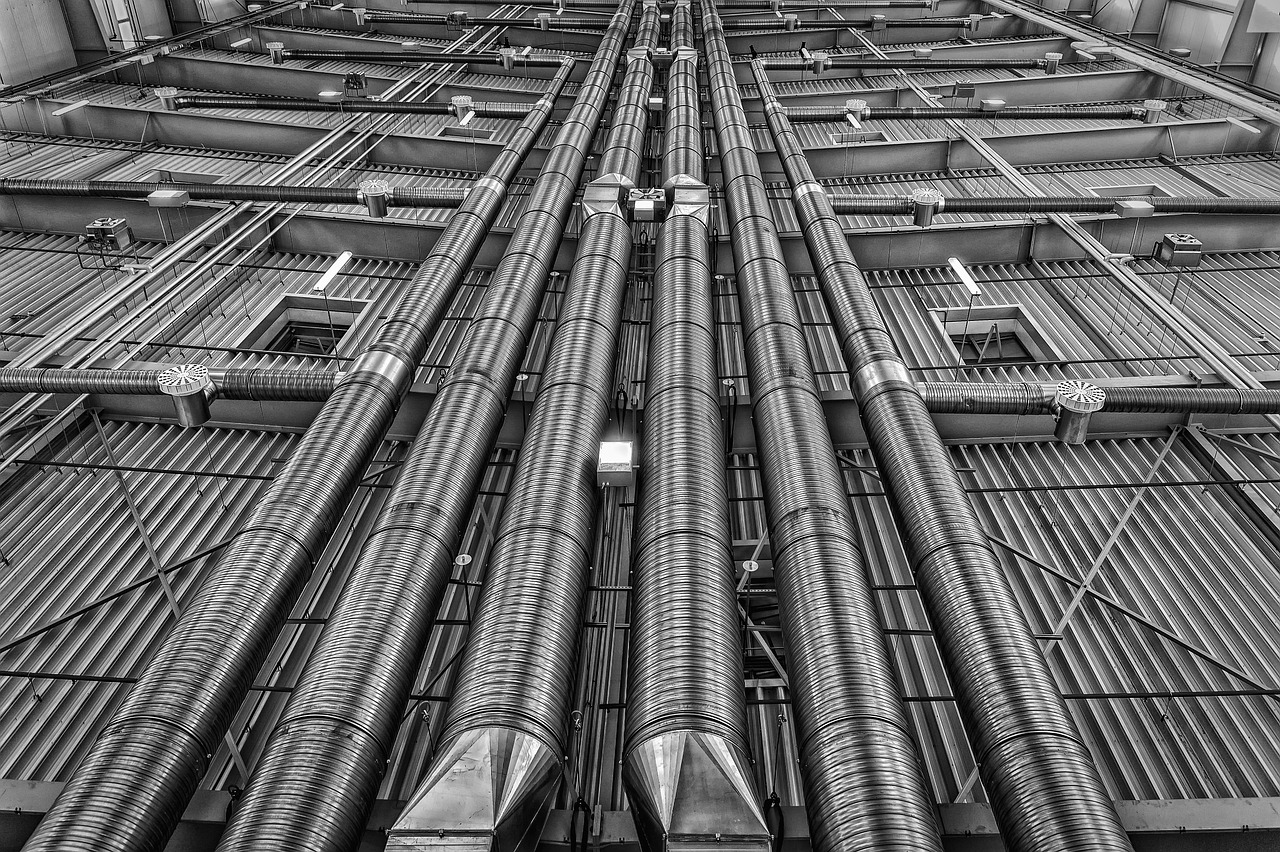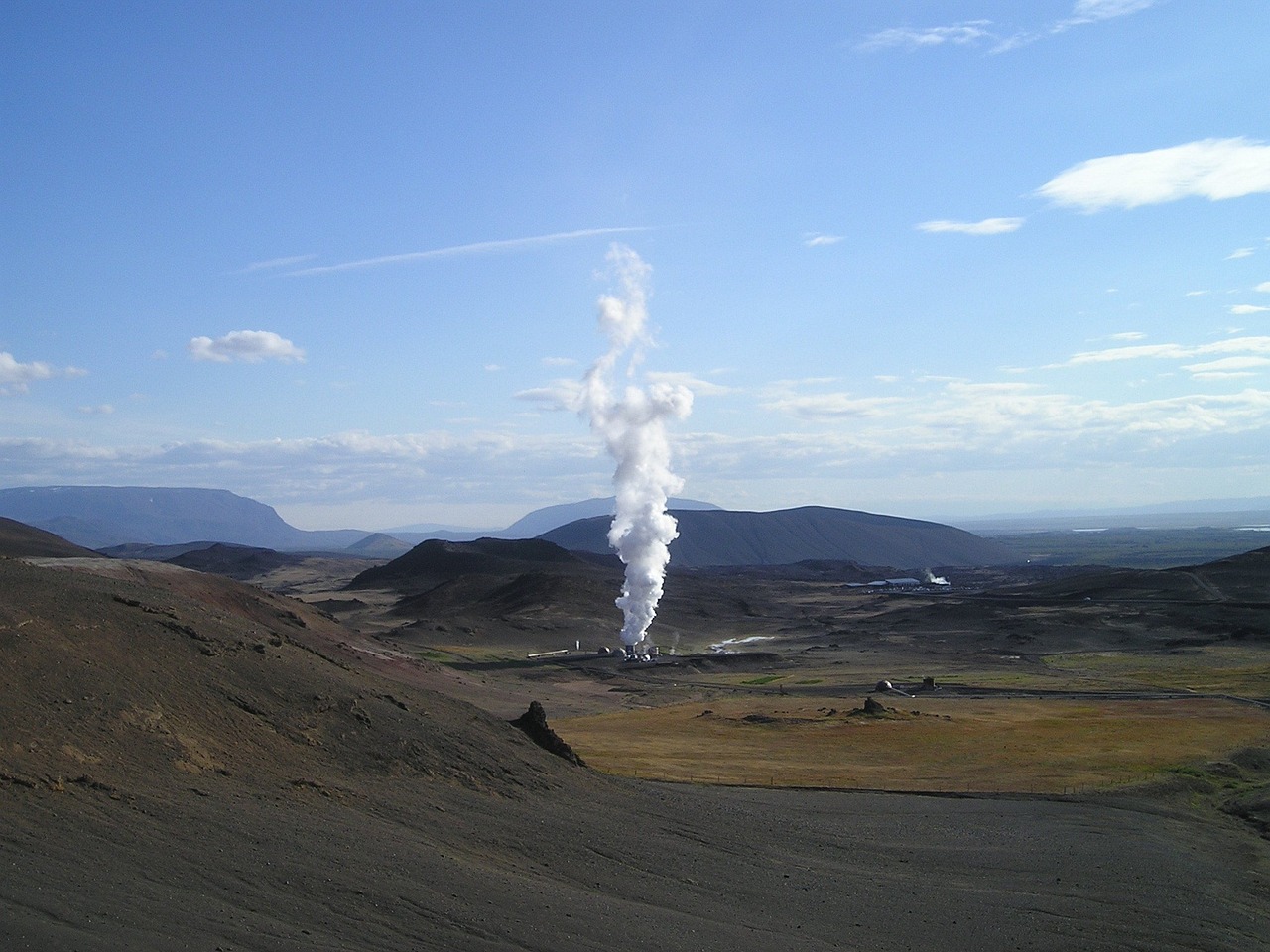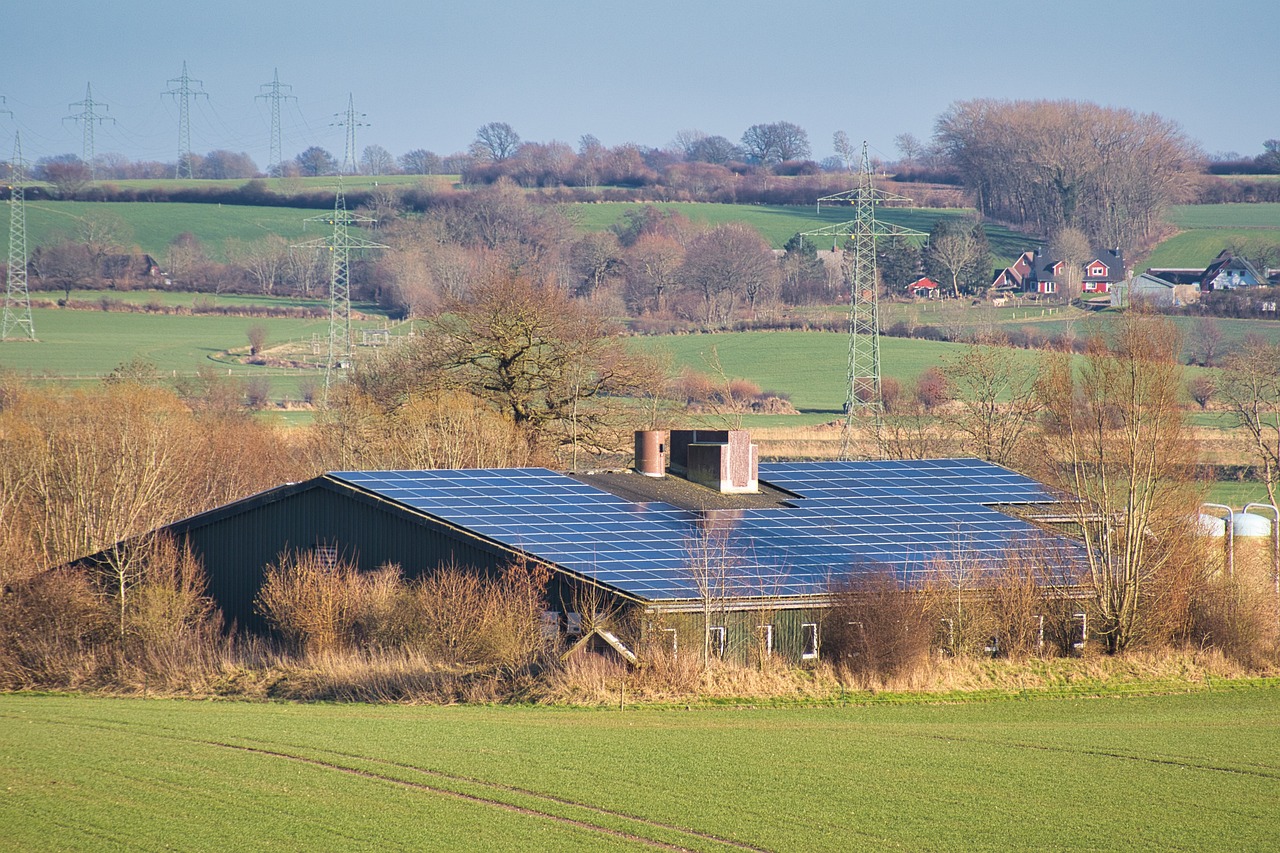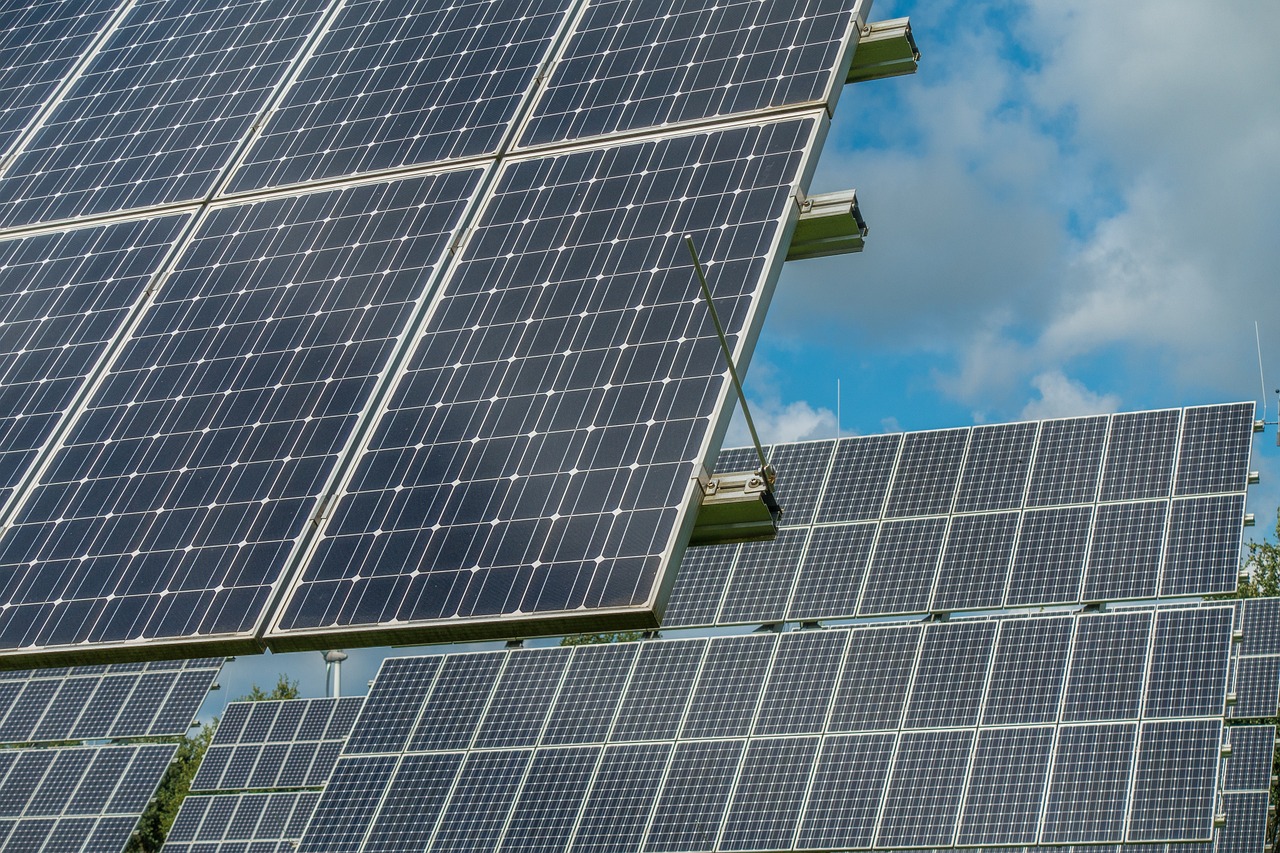How Green Energy Solutions Are Combatting Energy Poverty
Energy poverty is a pressing global issue that affects millions of people, particularly in developing nations. It’s not just about the lack of electricity; it’s about the **limitations** on health, education, and economic development that come with it. Imagine living in a world where you can't turn on a light at night, cook a warm meal, or access information online. This is the reality for many, but the good news is that green energy solutions are stepping in to change the narrative.
Green energy solutions, primarily derived from renewable sources like solar, wind, and hydro, are not only sustainable but also increasingly affordable. They offer a pathway out of energy poverty by providing **accessible** and **reliable** energy to those who need it most. By harnessing the power of nature, communities can gain independence from traditional energy sources that are often expensive and unreliable. This article dives deep into how these green technologies are making a difference, the innovative approaches being taken, and the challenges that still lie ahead.
Let's explore how renewable energy is not just a buzzword but a **lifeline** for millions. From solar panels lighting up homes in rural areas to wind turbines generating power where it was once a dream, the shift towards green energy is a beacon of hope. But, what exactly does this transition look like? And how can we ensure that it continues to grow and reach every corner of the globe? Buckle up as we embark on this enlightening journey through the world of green energy and its role in combatting energy poverty!
Energy poverty is defined as the lack of access to modern energy services, which can severely impact a person's quality of life. It goes beyond just the absence of electricity; it encompasses the inability to use energy for cooking, heating, or lighting. This situation leads to a myriad of issues, including health problems from indoor air pollution, educational setbacks due to lack of lighting for studying, and economic stagnation as businesses struggle without reliable power.
Globally, energy poverty affects an estimated 1.3 billion people, with the majority residing in Sub-Saharan Africa and South Asia. The implications are staggering:
- Health Risks: Poor energy access leads to reliance on traditional biomass fuels, which can cause respiratory diseases.
- Educational Barriers: Children often study in the dark, limiting their learning opportunities.
- Economic Impact: Businesses face operational challenges and higher costs due to unreliable energy sources.
To truly understand the gravity of energy poverty, we must recognize its ripple effects on society. As we delve deeper into renewable energy solutions, we will uncover how these technologies can address these issues and foster a brighter future for those living in energy poverty.
Renewable energy sources such as solar, wind, and hydro are pivotal in combating energy poverty. These sources provide not just energy but also a sense of **hope** and **empowerment**. By tapping into these natural resources, communities can achieve sustainable energy independence. The beauty of renewable energy is that it can be deployed at various scales, from small off-grid systems to large grid-connected projects, making it adaptable to different needs and contexts.
Solar energy initiatives have gained traction in energy-poor regions, transforming lives and communities. With the declining cost of solar technology, many organizations and governments are investing in solar projects that provide affordable energy access. For instance, in countries like India and Kenya, solar installations are enabling households to power lights, charge mobile phones, and run appliances.
Community solar programs are a fantastic way to democratize energy access. These initiatives allow multiple households to benefit from shared solar installations, reducing the financial burden on individual families. They promote energy equity and foster a sense of community ownership. Imagine a neighborhood coming together to install solar panels—this not only provides energy but also strengthens community bonds.
Off-grid solar solutions are particularly effective in remote areas where traditional energy infrastructure is lacking. These systems are designed to operate independently of the main power grid, making them ideal for rural communities. By utilizing solar panels, batteries, and inverters, families can generate and store their own electricity, leading to greater energy security and independence.
Wind energy is another renewable source that can alleviate energy poverty. Wind projects, whether large-scale or small, can significantly contribute to local energy independence. Countries like Denmark and Germany have successfully integrated wind energy into their energy mix, showcasing how harnessing wind can lead to sustainable development.
Despite the numerous benefits, several barriers hinder the widespread adoption of green energy solutions. Financial constraints, technical challenges, and regulatory hurdles can impede progress. Understanding these barriers is crucial for developing effective strategies to overcome them.
Financial constraints often limit investment in renewable energy projects. Many communities lack the necessary capital to initiate such projects, leading to reliance on traditional energy sources. However, there are funding options available, such as microfinance, grants, and public-private partnerships, that can help overcome these economic barriers.
Technological challenges can also impede the deployment of green energy solutions. There is a pressing need for innovation and capacity building in energy-poor regions. Training local technicians and fostering a culture of innovation can empower communities to maintain and expand their renewable energy systems.
Q: What is energy poverty?
A: Energy poverty refers to the lack of access to modern energy services, which affects health, education, and economic development.
Q: How can renewable energy help combat energy poverty?
A: Renewable energy sources like solar and wind provide sustainable and affordable energy, empowering communities and improving living standards.
Q: What are community solar programs?
A: Community solar programs allow multiple households to benefit from shared solar installations, promoting energy equity and local economies.
Q: What are the main barriers to implementing green energy solutions?
A: Financial constraints, technological challenges, and regulatory hurdles are significant barriers to the widespread adoption of green energy solutions.

Understanding Energy Poverty
Energy poverty is a pressing issue that affects millions of people around the world. It refers to the lack of access to modern energy services, which can severely limit individuals' quality of life. Imagine living in a home without electricity to power lights, cook food, or heat your space during the cold months. This reality is all too common in many regions, particularly in developing countries. The implications of energy poverty are far-reaching, impacting not just daily conveniences but also fundamental aspects of health, education, and economic development.
When we talk about energy poverty, we often think about the immediate effects—like the inability to charge a phone or keep food from spoiling. However, the consequences extend much deeper. For instance, without reliable energy, children struggle to study at night, leading to poor educational outcomes. In healthcare, clinics without electricity cannot store vaccines or operate essential medical equipment, putting lives at risk. Furthermore, energy poverty can stifle economic growth. Small businesses rely on electricity to operate machinery, and without it, they cannot thrive.
To better understand the scope of energy poverty, consider the following statistics:
| Region | Population Affected by Energy Poverty | % of Total Population |
|---|---|---|
| Sub-Saharan Africa | 600 million | 57% |
| South Asia | 300 million | 25% |
| East Asia | 150 million | 10% |
As illustrated, Sub-Saharan Africa faces the most significant challenge, with over half of its population lacking access to electricity. This stark reality raises critical questions: How can we effectively address energy poverty? What innovative solutions can be implemented to ensure everyone has access to reliable energy sources? The answers lie in harnessing renewable energy solutions, which can provide sustainable and affordable energy options for those most in need.
In conclusion, understanding energy poverty is crucial for developing effective strategies to combat it. The implications are not just about energy access; they touch on the very fabric of society, influencing health, education, and economic stability. By addressing this issue head-on, we can pave the way for a brighter, more equitable future for all.

Renewable Energy Sources
In the quest to combat energy poverty, like solar, wind, and hydro power have emerged as pivotal players. These sources not only offer sustainable energy solutions but also bring the promise of accessibility to communities that have long been in the dark—literally and figuratively. Imagine a world where everyone has access to energy that is clean, affordable, and abundant. That's the dream, and renewable energy is the key to unlocking that potential.
So, what makes renewable energy so special? For starters, it harnesses natural resources that are virtually limitless. Unlike fossil fuels, which are finite and contribute to environmental degradation, renewable sources are continually replenished by nature. This means that communities can rely on them for generations without depleting the earth’s resources. For instance, the sun shines every day, and the wind blows in many regions, making these sources incredibly reliable. But the benefits extend beyond just sustainability; they also have the potential to stimulate local economies and create jobs.
Consider the economic implications of adopting renewable energy. By investing in local renewable projects, communities can create jobs in installation, maintenance, and operation. This not only helps to lift families out of poverty but also strengthens the local economy. Renewable energy projects can attract investments, enhance energy independence, and reduce reliance on expensive imported fuels. Moreover, the cost of renewable technologies has plummeted in recent years, making them more accessible than ever before. For instance, the price of solar panels has dropped by over 80% since 2010, making it feasible for even low-income households to consider solar energy options.
To illustrate the impact of renewable energy, let’s take a closer look at some specific sources:
| Renewable Source | Benefits | Challenges |
|---|---|---|
| Solar Energy |
|
|
| Wind Energy |
|
|
| Hydro Energy |
|
|
As we delve deeper into the realm of renewable energy, it’s crucial to recognize that while these sources are promising, they also come with their own set of challenges. For example, solar energy is heavily dependent on weather conditions, and wind energy can be intermittent. However, advancements in technology are paving the way for more efficient energy storage solutions, which could mitigate these issues. The future looks bright, but we must continue to innovate and adapt to ensure that renewable energy can effectively address energy poverty.

Solar Energy Initiatives
Solar energy initiatives have emerged as a beacon of hope for communities grappling with energy poverty. Imagine waking up in a remote village where the sun shines brightly, yet the residents are left in the dark simply because they lack access to electricity. This is a reality for millions, but innovative solar projects are changing that narrative. By harnessing the power of the sun, these initiatives not only provide essential energy services but also empower communities to take control of their energy needs.
One of the most exciting aspects of solar energy initiatives is their adaptability. They can be scaled to fit various contexts, from small household systems to larger community solar farms. For instance, in regions where traditional energy infrastructure is lacking, off-grid solar solutions are proving to be game-changers. These systems allow households to generate their own electricity, significantly reducing reliance on expensive and often unreliable fossil fuels. Not only does this enhance energy security, but it also promotes environmental sustainability by reducing carbon emissions.
Moreover, successful solar projects often involve local communities in their implementation, fostering a sense of ownership and cooperation. Take, for example, the solar microgrid projects in rural India. These initiatives have empowered local entrepreneurs to manage solar installations, creating jobs and stimulating local economies. The benefits ripple through the community, improving health outcomes, educational opportunities, and overall quality of life. When communities are involved in the decision-making process, the initiatives are more likely to succeed and be embraced by the residents.
In addition to individual household systems, community solar programs have gained traction as a viable solution to energy poverty. These programs allow multiple households to benefit from shared solar installations, making renewable energy more accessible and affordable. By pooling resources, communities can invest in larger solar projects that would be financially unfeasible for individual households. This collective approach not only enhances energy equity but also strengthens community bonds, as residents work together towards a common goal.
However, the journey towards widespread solar adoption is not without its challenges. Financial barriers, such as high initial costs and lack of access to credit, can hinder the rollout of solar initiatives. To address these issues, various funding models have been developed, including pay-as-you-go systems and microfinance options. These models not only lower the financial burden on households but also encourage greater participation in solar programs.
In conclusion, solar energy initiatives are pivotal in combating energy poverty. They provide sustainable energy solutions that empower communities, stimulate local economies, and contribute to environmental sustainability. As we continue to innovate and adapt these solutions, the potential for solar energy to transform lives and uplift communities is immense. The sun is shining, and with it comes the promise of a brighter, more equitable future for all.
- What is energy poverty? Energy poverty refers to the lack of access to essential energy services, affecting health, education, and economic development.
- How can solar energy help combat energy poverty? Solar energy provides a sustainable and accessible energy source, empowering communities and improving living standards.
- What are community solar programs? Community solar programs allow multiple households to share solar installations, enhancing energy equity and affordability.
- What challenges do solar initiatives face? Financial constraints, technological challenges, and regulatory barriers can hinder the adoption of solar energy solutions.

Community Solar Programs
Community solar programs are revolutionizing the way we think about energy access, especially in regions plagued by energy poverty. Imagine a neighborhood where families, regardless of their financial situation, can harness the power of the sun without the burden of installing individual solar panels on their rooftops. This innovative approach not only democratizes energy access but also fosters a sense of community and collaboration among residents.
At its core, a community solar program allows multiple households to benefit from a shared solar installation, typically located on a community building or a dedicated solar farm. This means that instead of each household needing to invest in their own solar system, they can collectively invest in a larger project that distributes the benefits among all participants. As a result, even those who may not have the ideal roof for solar panels or the upfront capital to invest can enjoy the advantages of renewable energy.
One of the key benefits of community solar programs is their ability to enhance energy equity. By providing access to clean energy for low-income households, these programs can significantly reduce monthly energy bills. For instance, in some successful projects, participants have reported savings of up to 30% on their electricity costs. This financial relief can be transformative, allowing families to allocate their resources to other essential needs like education, healthcare, and food.
Moreover, community solar initiatives often stimulate local economies. By creating jobs in solar installation, maintenance, and management, these programs not only provide sustainable energy but also contribute to the economic development of the area. According to a recent report, community solar projects have the potential to create thousands of jobs in installation and related industries, thereby boosting local employment rates.
However, the implementation of community solar programs is not without its challenges. Regulatory hurdles, such as zoning laws and utility regulations, can pose significant barriers. Additionally, securing funding for these projects can be tricky, as they often require upfront investment before any returns are realized. Nonetheless, many communities are finding creative solutions to these challenges, such as partnering with local governments or leveraging crowdfunding platforms to raise the necessary capital.
In conclusion, community solar programs stand as a beacon of hope in the fight against energy poverty. By pooling resources and sharing the benefits of solar energy, communities can achieve greater energy independence, improve their financial situations, and foster a collaborative spirit. As we continue to explore innovative energy solutions, these programs exemplify how we can harness the power of the sun for the greater good, ensuring that no one is left in the dark.
- What is a community solar program? A community solar program allows multiple households to share the benefits of a single solar installation, making renewable energy accessible to those who may not be able to install solar panels on their own.
- How do community solar programs save money? Participants in community solar programs typically receive credits on their electricity bills based on the energy produced by the shared solar installation, leading to potential savings on monthly energy costs.
- Are community solar programs available in all areas? Availability varies by location, depending on state regulations and the presence of local solar developers. It's best to check with local utility providers for options.
- Can renters participate in community solar programs? Yes! Community solar programs are designed to include renters and others who may not have the ability to install solar panels on their properties.

Off-Grid Solar Solutions
Off-grid solar solutions are revolutionizing the way energy is accessed in remote and underserved areas, providing a beacon of hope for communities that have long been in the dark—quite literally! Imagine living in a place where electricity is just a dream; off-grid solar systems are turning that dream into reality. These systems operate independently of the traditional power grid, harnessing the sun's energy to generate electricity for homes, schools, and businesses. In regions where extending the grid is impractical or too expensive, off-grid solar solutions emerge as a lifeline.
One of the most compelling aspects of off-grid solar technology is its adaptability. These systems can be designed to meet the specific energy needs of a community, whether it’s powering a single household or an entire village. Typically, an off-grid solar setup includes solar panels, a battery storage system, and an inverter. The solar panels collect sunlight, converting it into electricity, which is then stored in batteries for use when the sun isn’t shining. This means that families can enjoy reliable energy access, even after sunset.
Moreover, the impact of off-grid solar solutions extends beyond mere electricity access. By providing a reliable power source, these systems can enhance educational opportunities, improve healthcare services, and stimulate local economies. For instance, schools equipped with solar power can extend their hours for evening classes or provide access to computers and the internet. Similarly, health clinics can store vaccines and operate essential medical equipment, ultimately saving lives.
However, implementing off-grid solar solutions is not without its challenges. Initial setup costs can be a barrier for many communities, although various funding options and micro-financing models are emerging to alleviate this issue. Additionally, the need for ongoing maintenance and technical support is crucial for the longevity of these systems. Local training programs can empower residents to manage and maintain the technology, fostering a sense of ownership and sustainability.
To illustrate the potential of off-grid solar solutions, consider the following table showcasing successful projects around the world:
| Project Name | Location | Impact |
|---|---|---|
| Solar Sister | Sub-Saharan Africa | Empowers women entrepreneurs to sell solar products, improving access to clean energy. |
| SunBox | India | Provides off-grid solar systems to rural households, enhancing quality of life. |
| Solar Water Pumping | East Africa | Utilizes solar power for irrigation, boosting agricultural productivity. |
In summary, off-grid solar solutions represent a transformative approach to combating energy poverty. By leveraging renewable energy, these systems not only provide electricity but also empower communities, enhance education, and improve health outcomes. As we continue to innovate and invest in these technologies, the dream of energy access for all can become a reality.
- What are off-grid solar solutions? Off-grid solar solutions are systems that generate electricity independently of the traditional power grid, using solar energy to power homes and communities.
- How do off-grid solar systems work? They typically consist of solar panels, battery storage, and an inverter, which together convert sunlight into electricity for use at any time.
- What are the benefits of off-grid solar solutions? These solutions provide reliable energy access, enhance education and healthcare, and stimulate local economies, especially in remote areas.
- What challenges do off-grid solar solutions face? Challenges include initial setup costs, the need for maintenance, and the requirement for local training and support.

Wind Energy Applications
Wind energy has emerged as a formidable ally in the fight against energy poverty, offering a sustainable and scalable solution to communities that have long been deprived of reliable energy sources. Imagine standing on a hilltop, feeling the cool breeze against your face, while the gentle whir of wind turbines spins in the background. This is not just a picturesque scene; it's a glimpse into the future of energy for countless communities around the world. Wind energy applications can significantly reduce dependence on fossil fuels, lower energy costs, and promote local job creation, all while being environmentally friendly.
One of the most compelling aspects of wind energy is its versatility. It can be harnessed at various scales, making it suitable for both large wind farms and small community-based projects. For instance, in many rural areas, small wind turbines can be installed to power homes and schools, providing a reliable energy source that can transform lives. These small-scale installations not only provide electricity but also foster a sense of community ownership and empowerment, as residents take charge of their energy needs.
Moreover, wind energy projects often come with additional benefits that extend beyond just energy production. They can enhance local economies by creating jobs in manufacturing, installation, and maintenance. According to recent studies, the wind sector has become a significant job creator, with thousands of positions opening up in various regions. This job creation is vital because it helps to uplift communities, providing them with the financial stability they need to thrive.
While the potential of wind energy is enormous, it is essential to acknowledge the challenges that accompany its implementation. For instance, the initial investment for wind energy infrastructure can be substantial. However, many governments and organizations are stepping up to provide financial incentives and grants to alleviate these costs. In addition, technological advancements are making wind turbines more efficient and affordable, further enhancing their attractiveness as a renewable energy source.
To illustrate the impact of wind energy applications, let’s look at a few successful projects around the globe:
| Project Name | Location | Capacity (MW) | Impact |
|---|---|---|---|
| Gansu Wind Farm | China | 7,965 | Provides energy to millions, reducing coal dependency. |
| Hornsea One | UK | 1,218 | Powers over a million homes, boosting local economy. |
| Lake Turkana Wind Power | Kenya | 310 | Significantly increases energy access in rural areas. |
As we can see, these projects not only contribute to energy generation but also play a crucial role in socio-economic development. They demonstrate that wind energy is not merely an alternative; it is a pathway to a brighter, more sustainable future.
In conclusion, wind energy applications are a beacon of hope for communities grappling with energy poverty. By harnessing the power of the wind, we can create a more equitable and sustainable energy landscape, ensuring that everyone has access to the energy they need to thrive. As we continue to innovate and invest in renewable energy, the dream of a world free from energy poverty becomes increasingly attainable.
- What is wind energy? Wind energy is the process of converting wind into usable electricity using wind turbines.
- How does wind energy help in reducing energy poverty? By providing a sustainable and affordable energy source, wind energy can improve access to electricity in underserved communities.
- Are there any environmental impacts of wind energy? Wind energy is considered environmentally friendly, but it can have some impacts on wildlife and local ecosystems that need to be managed.
- What are the costs associated with wind energy projects? While initial costs can be high, ongoing operational costs are relatively low, and many financial incentives are available to support projects.

Barriers to Implementation
Despite the promising potential of green energy solutions to combat energy poverty, several barriers hinder their widespread adoption. These obstacles can be likened to a chain link fence, where each link represents a different challenge that keeps communities from accessing the energy they desperately need. Understanding these barriers is crucial for developing effective strategies to overcome them.
One of the most significant barriers is financial constraints. Many energy-poor regions struggle with limited budgets and lack of investment in renewable energy projects. It's a classic case of wanting to buy a ticket to a concert but not having enough money to afford it. Without proper funding, communities often resort to traditional energy sources that are not only harmful to the environment but also unsustainable in the long run. To tackle this issue, innovative funding options such as microfinance, public-private partnerships, and international grants can play a pivotal role in facilitating investments in green energy initiatives.
Moreover, technological challenges present another formidable hurdle. Many regions lack the necessary infrastructure and technological expertise to implement renewable energy solutions effectively. Imagine trying to cook a gourmet meal without the right tools; it’s nearly impossible! This lack of capacity can lead to inefficient systems that fail to deliver the promised energy benefits. To address this, it’s essential to invest in training programs and capacity-building initiatives that equip local communities with the skills needed to maintain and operate renewable energy systems.
Regulatory challenges also complicate the landscape for green energy implementation. In many cases, outdated regulations and bureaucratic red tape can stall or even prevent the deployment of renewable energy projects. For instance, lengthy permitting processes can delay solar installations, leaving communities in the dark—literally! Streamlining regulations and creating supportive policies can greatly enhance the feasibility of implementing green energy solutions.
Additionally, cultural and social barriers can impede progress. In some communities, there may be a lack of awareness or skepticism about the benefits of renewable energy. This can create resistance to adopting new technologies. Building trust and engaging with communities through education and awareness campaigns can help change perceptions and foster a more welcoming environment for green energy initiatives.
In summary, while the path to implementing green energy solutions is fraught with challenges, recognizing and addressing these barriers is the first step toward overcoming them. By fostering collaboration among stakeholders, investing in innovative funding and training programs, and advocating for supportive policies, we can pave the way for a more sustainable and equitable energy future.
- What are the main barriers to implementing green energy solutions?
Financial constraints, technological challenges, regulatory hurdles, and cultural resistance are the primary barriers that communities face. - How can financial constraints be addressed?
Innovative funding options such as microfinance, public-private partnerships, and international grants can facilitate investments in renewable energy projects. - Why are technological challenges significant?
A lack of infrastructure and expertise can lead to inefficient energy systems, preventing communities from fully benefiting from renewable energy sources. - What role do regulations play in renewable energy implementation?
Outdated regulations can stall projects, making it crucial to streamline processes and create supportive policies for green energy initiatives.

Financial Constraints
When it comes to implementing green energy solutions, one of the most significant hurdles is . Many communities, especially those grappling with energy poverty, find themselves in a catch-22 situation. They need sustainable energy solutions to improve their living conditions, but they lack the funds to invest in such technologies. This cycle of dependency can feel like a never-ending loop, where the need for energy drives the demand for investment, but without the initial capital, progress remains stagnant.
It's essential to understand that the cost of renewable energy technologies, while decreasing over recent years, can still be prohibitively high for many low-income communities. For instance, the upfront costs associated with solar panels, wind turbines, and energy storage systems can deter potential investors and limit community initiatives. Moreover, the financial burden doesn’t stop at installation; ongoing maintenance and operational costs can further strain already tight budgets.
To tackle these financial constraints, various funding options and strategies have emerged, aiming to bridge the gap between need and availability. Here are some noteworthy approaches:
- Grants and Subsidies: Many governments and organizations offer grants to support renewable energy projects. These financial aids can significantly reduce the burden of initial costs.
- Microfinancing: Microloans can empower individuals and small businesses to invest in green technologies without the pressure of large upfront payments.
- Public-Private Partnerships: Collaborations between government entities and private companies can lead to innovative financing solutions that benefit both parties and the communities they serve.
Additionally, innovative financing models such as pay-as-you-go systems have gained traction in many developing regions. These models allow households to pay for solar energy systems incrementally, making renewable energy more accessible without overwhelming financial commitments. Imagine being able to power your home with solar energy, paying only for what you use, much like a mobile phone plan. This flexibility can be a game-changer for families who otherwise might not have the means to invest in renewable energy.
Despite these promising solutions, there are still significant challenges that need to be addressed. For example, the lack of financial literacy in some communities can prevent residents from taking advantage of available funding opportunities. Educating these communities about financial options and empowering them with knowledge is crucial for fostering an environment where green energy solutions can thrive.
In summary, while financial constraints pose a formidable barrier to the adoption of green energy solutions, various strategies and funding options exist to help overcome these challenges. By innovating financing methods and improving financial literacy, communities can break free from the cycle of energy poverty and embrace a more sustainable future.
- What is energy poverty? Energy poverty refers to the lack of access to modern energy services, which can severely impact health, education, and economic opportunities.
- How can renewable energy help alleviate energy poverty? Renewable energy provides sustainable and affordable energy solutions, which can improve living standards and empower communities.
- What are some common financial barriers to renewable energy? Common financial barriers include high upfront costs, lack of funding, and limited access to financing options.
- What is a pay-as-you-go system? A pay-as-you-go system allows users to pay for energy services incrementally, making renewable energy more accessible.

Technological Challenges
When it comes to implementing green energy solutions, can often feel like climbing a steep mountain without the right gear. These hurdles can vary widely, but they all share a common thread: they hinder progress in alleviating energy poverty. One major challenge is the lack of infrastructure in many energy-poor regions. Without the necessary grid or distribution networks, even the most innovative renewable technologies can become useless. Imagine trying to fill a bucket with water, but the bucket has holes in it; that's what it's like when communities lack the infrastructure to support renewable energy systems.
Moreover, there’s often a knowledge gap regarding how to effectively implement and maintain these technologies. Many communities may have access to solar panels or wind turbines, but without proper training and support, these resources can quickly fall into disrepair. This situation is akin to giving someone a state-of-the-art smartphone without teaching them how to use it; it becomes an expensive paperweight rather than a tool for empowerment.
Additionally, the integration of new technologies into existing systems can pose significant challenges. For instance, incorporating solar energy into a grid that was designed for fossil fuels requires careful planning and adaptation. This can lead to issues such as intermittency, where energy supply doesn’t always match demand. Communities need solutions that not only provide energy but do so in a reliable and consistent manner. To illustrate, consider a scenario where a family relies on solar energy for cooking and heating, but cloudy weather leaves them without power. This unpredictability can undermine the very purpose of green energy solutions.
Furthermore, the cost of technology itself can be a barrier. While the prices of solar panels and wind turbines have decreased significantly over the years, the initial investment can still be daunting for low-income communities. This financial strain often leads to a reliance on cheaper, less sustainable energy sources, thereby perpetuating the cycle of energy poverty. It’s crucial to develop funding models that make these technologies accessible to everyone. In fact, a recent study revealed that a significant percentage of energy-poor households would be willing to invest in renewable energy if they were provided with affordable financing options.
To tackle these technological challenges effectively, a multi-faceted approach is required. This includes:
- Capacity Building: Training local technicians to install and maintain renewable energy systems.
- Infrastructure Development: Investing in the necessary grid and distribution networks.
- Innovative Financing: Creating funding models that make renewable technologies affordable for low-income communities.
By addressing these challenges head-on, we can pave the way for a more sustainable and equitable energy future. Remember, overcoming technological barriers is not just about the technology itself; it’s about empowering communities to take control of their energy needs and fostering a culture of sustainability.
- What are the main technological challenges in implementing green energy solutions?
The main challenges include lack of infrastructure, knowledge gaps, integration issues, and high initial costs.
- How can communities overcome these challenges?
Communities can overcome these challenges through capacity building, infrastructure development, and innovative financing options.
- Why is training important for renewable energy technologies?
Training ensures that local technicians can effectively install and maintain renewable energy systems, leading to long-term sustainability.
Frequently Asked Questions
- What is energy poverty?
Energy poverty refers to the lack of access to modern energy services, which affects millions of people worldwide. It limits their ability to heat their homes, cook food, and access essential services like healthcare and education. Imagine living in a place where you can’t turn on a light or cook a warm meal—this is the reality for many facing energy poverty.
- How do renewable energy sources help combat energy poverty?
Renewable energy sources like solar, wind, and hydro provide sustainable and affordable energy solutions. These sources can be harnessed locally, reducing dependency on expensive fossil fuels and increasing energy independence. Think of it as using nature’s power to light up your life—literally!
- What are community solar programs?
Community solar programs allow multiple households to share a single solar installation. This makes solar energy accessible to those who may not have the means to install their own systems. It’s a bit like a potluck dinner where everyone brings something to the table, and together, they enjoy a feast!
- What are off-grid solar solutions?
Off-grid solar solutions are systems that provide energy access to remote areas not connected to the main electricity grid. These systems typically include solar panels, batteries, and inverters, allowing communities to generate and store their own power. It’s like having your own mini power plant right in your backyard!
- What barriers hinder the adoption of green energy solutions?
Several barriers can impede the widespread adoption of green energy solutions, including financial constraints, technological challenges, and regulatory issues. Communities may struggle to secure funding or lack the technical expertise to implement these projects effectively. It’s like trying to build a house without the right tools—frustrating and often impossible!
- How can financial constraints be overcome for renewable energy projects?
Financial constraints can be tackled through various funding options like grants, loans, and public-private partnerships. Innovative financing models, such as pay-as-you-go systems, can also make renewable energy more accessible. It’s all about finding creative ways to make the dream of clean energy a reality!
- What technological challenges do renewable energy solutions face?
Technological challenges include the need for advanced energy storage solutions, grid integration, and the adaptation of renewable technologies to local conditions. Building capacity and fostering innovation in energy-poor regions is crucial to overcoming these hurdles. Think of it as upgrading your old smartphone to the latest model—you need the right tools to make it work!



















